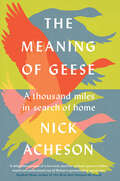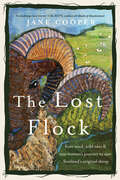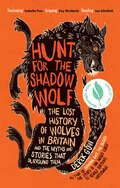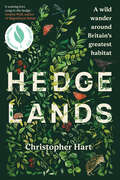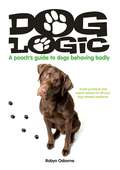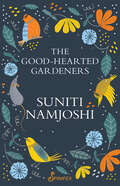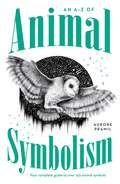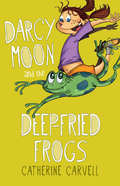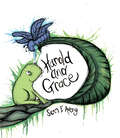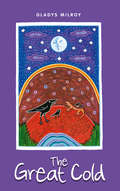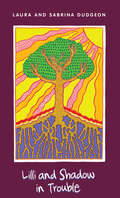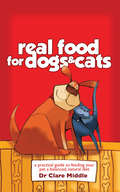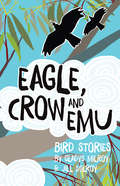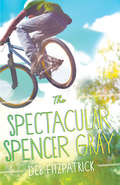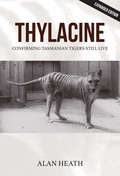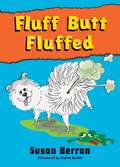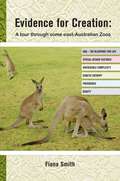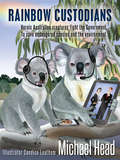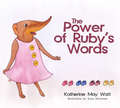- Table View
- List View
The Meaning of Geese: A Thousand Miles in Search of Home
by Nick Acheson‘A magisterial diary for bird lovers.’ ObserverWINNER – BOOK OF THE YEAR - East Anglian Book Awards 2023⭐⭐⭐⭐ The TelegraphAs seen on BBC Winterwatch 2023‘Honest, human and heart-grabbing. I loved this book so much.’ Sophie Pavelle, author of Forget Me Not‘Delightful’ Stephen Moss, author of Ten Birds that Changed the World‘Fascinating and thought-provoking’ Jake Fiennes, author of Land Healer‘Awe-filled and absorbing’ Nicola Chester, author of On Gallows DownThe Meaning of Geese is a book of thrilling encounters with wildlife, of tired legs, punctured tyres and inhospitable weather. Above all, it is the story of Nick Acheson’s love for the land in which he was born and raised, and for the wild geese that fill it with sound and spectacle every winter.Renowned naturalist and conservationist Nick Acheson spent countless hours observing and researching wild geese, transported through all weathers by his mother’s 40-year-old trusty red bicycle. He meticulously details the geese’s arrival, observing what they mean to his beloved Norfolk and the role they play in local people’s lives – and what role the birds could play in our changing world. During a time when many people faced the prospect of little work or human contact, Nick followed the pinkfeet and brent geese that filled the Norfolk skies and landscape as they flew in from Iceland and Siberia. In their flocks, Nick encountered rarer geese, including Russian white-fronts, barnacle geese and an extremely unusual grey-bellied brant, a bird he had dreamt of seeing since thumbing his mother’s copy of Peter Scott’s field guide as a child.To honour the geese’s great athletic migrations, Nick kept a diary of his sightings as well as the stories he discovered through the community of people, past and present, who loved them, too. Over seven months Nick cycles over 1,200 miles – the exact length of the pinkfeet’s migration to Iceland.
The Lost Flock: Rare Wool, Wild Isles and One Woman’s Journey to Save Scotland’s Original Sheep
by Jane CooperThe Lost Flock is the story of the remarkable and rare little horned sheep, known as Orkney Boreray, and the wool-obsessed woman who moved to one of Scotland’s wildest islands to save them. It was Jane Cooper’s passion for knitting that led her to discover the world of rare-breed sheep and their wool. Through this, Jane uncovered the ‘Orkney Borerary’ – a unique group within the UK’s rarest breed of sheep, the Boreray, and one of the few surviving examples of primitive sheep in northern Europe. As her knowledge of this rarest of heritage breeds grew, she took the bold step to uproot her quiet suburban life in Newcastle and relocate to Orkney, embarking on a new adventure and life as farmer and shepherd. Jane was astonished to find that she was the sole custodian of this lost flock in the world, and so she began investigating their mysterious and ancient history, tracking down the origins of the Boreray breed and its significance to Scotland’s natural heritage. From Viking times to Highland crofts and nefarious research experiments in Edinburgh, this is a so-far untold real-life detective story. It is also the story of one woman’s relentless determination to ensure a future for her beloved sheep, and in doing so revealing their deep connection to the Scottish landscape. An unforgettable story of a heritage breed and the importance of its existence.
Hunt for the Shadow Wolf [US Edition]: The lost history of wolves in Britain and the myths and stories that surround them
by Derek Gow"Terrific, life-lit moments come howling out of Hunt for the Shadow Wolf."—The Telegraph "[Derek Gow is] a wry, profane truth teller who is equal parts yeoman farmer, historical ecologist, and pirate."—Ben Goldfarb, author of Eager and Crossings "Beautifully crafted, fascinating and unbearably poignant, I totally loved this book."—Isabella Tree, author of Wilding Renowned rewilder Derek Gow has a dream: that one day we will see the return of the wolf to Britain as it has already returned elsewhere. As Derek worked to reintroduce the beaver, he began to hear stories of the wolf, both real and mythical, and his fascination with this creature grew. With increasing curiosity, Derek started to piece together fragments of information, stories and artefacts to reveal a shadowy creature that first walked proud through these lands and then was hunted to extinction as coexistence turned to fear, hatred – and domination. What Derek came to realize was that the underlying motives behind our hatred were actually far more prosaic and, like most persecutions, to do with power and profit. We turned the wolf into a savage beast and saw its extirpation as a civilizing mission. But the wolf survived far longer than many thought and Derek tells of his sightings of the wolf through folklore and mythology, the records of grand estates and parish churches as well as wolf heads, both real and recreated. With bitingly funny but also tender stories, Hunt for the Shadow Wolf is Derek’s quest to uncover the true nature of this creature because, as we seek to heal our landscape, we must reconcile our relationship with it. Before we can even begin to bring the wolf back, we need to understand it. "I have loved this chase dearly and though what unfolds might be an ending of sorts, I have no intention to let this hunt cease."―Derek Gow, from Hunt for the Shadow Wolf "Gow reinvents what it means to be a guardian of the countryside."—The Guardian
Hunt for the Shadow Wolf [US Edition]: The lost history of wolves in Britain and the myths and stories that surround them
by Derek GowLonglisted for the James Cropper Wainwright Prize 2024 for Nature Writing"Terrific, life-lit moments come howling out of Hunt for the Shadow Wolf."—The Telegraph"One of the most remarkable figures in British conservation."—The Observer"There have been several books on the fate of British wolves, but this is the best."—The Spectator"[Derek Gow is] a wry, profane truth teller who is equal parts yeoman farmer, historical ecologist, and pirate."—Ben Goldfarb, author of Eager and CrossingsRenowned rewilder Derek Gow has a dream: that one day we will see the return of the wolf to Britain as it has already returned elsewhere. As Derek worked to reintroduce the beaver, he began to hear stories of the wolf, both real and mythical, and his fascination with this creature grew. With increasing curiosity, Derek started to piece together fragments of information, stories and artefacts to reveal a shadowy creature that first walked proud through these lands and then was hunted to extinction as coexistence turned to fear, hatred – and domination.What Derek came to realize was that the underlying motives behind our hatred were actually far more prosaic and, like most persecutions, to do with power and profit. We turned the wolf into a savage beast and saw its extirpation as a civilizing mission. But the wolf survived far longer than many thought and Derek tells of his sightings of the wolf through folklore and mythology, the records of grand estates and parish churches as well as wolf heads, both real and recreated.With bitingly funny but also tender stories, Hunt for the Shadow Wolf is Derek&’s quest to uncover the true nature of this creature because, as we seek to heal our landscape, we must reconcile our relationship with it. Before we can even begin to bring the wolf back, we need to understand it."I have loved this chase dearly and though what unfolds might be an ending of sorts, I have no intention to let this hunt cease."―Derek Gow, from Hunt for the Shadow Wolf"Beautifully crafted, fascinating and unbearably poignant, I totally loved this book."—Isabella Tree, author of Wilding"Gow reinvents what it means to be a guardian of the countryside."—The Guardian
Hedgelands [US Edition]: A wild wander around Britain’s greatest habitat
by Christopher HartOn this joyous journey around the wild edges of Britain, celebrated author Christopher Hart takes us through the life, ecology and history of the humble countryside hedge and how it is inextricably woven into our language, landscape and culture. Hedges – or hedgerows – have long been an integral part of the British landscape. An ancient, human-made boundary, hedgerows have become a critically important haven for wildlife and are now being recognised as one of the greatest ‘edge’ habitats on Earth. Britain boasts 400,000 kilometres of hedgerows, but has lost 50 per cent of them since the Second World War and their slow deterioration today is becoming a huge threat to the ecosystem. In Hedgelands, Christopher Hart shares the history of the hedge, highlighting the hawthorn and hazel of ancient hedgerows, and reveals its abundance of wildlife, from the elusive dunnock to the iconic nightingale, the industrious hedgehog to the miniscule harvest mouse. He demonstrates how this true environmental hero and powerful climate ally can help rebuild species-rich, resilient havens for birds, mammals and insects. Hedges play a vital role in mature woodland, grassland and even wetland, all of which can offer us much-needed ecological diversity and carbon sequestration. Through rewilding a patch of land in southwest England, Christopher shows us how easy, joyful and rewarding it is to restore even the smallest stretch of hedge. Whether you live in the country or the city, Hedgelands shares how simple actions can make a huge difference to the future of our precious hedges – and environment. “What’s good for us is good for nature, and what’s good for nature is good for us. And nowhere is this more true than in the bustling, flourishing, flowering, fruiting and altogether glorious native British hedge.”—Christopher Hart
Hedgelands [US Edition]: A wild wander around Britains greatest habitat
by Christopher HartLonglisted for the James Cropper Wainwright Prize 2024 for Nature Writing"Delightful . . . Hedgelands is a merry exposition on the history and biology of these unique ecosystems, and a very good argument as to why we should re-engage with the hedge."—The Wall Street Journal"Hart&’s passion for the potential that resides here is intoxicating. Occasionally an environmental solution comes along that is so breathtakingly simple you can&’t believe that not everyone is already doing it."—Sunday Times"[A] joyously readable book— it riffs along like breeze in the hedgerow."—John Lewis-Stempel in Country LifeOn this joyous journey around the wild edges of Britain, celebrated author Christopher Hart takes us through the life, ecology and history of the humble countryside hedge and how it is inextricably woven into our language, landscape and culture.Hedges – or hedgerows – have long been an integral part of the British landscape. An ancient, human-made boundary, hedgerows have become a critically important haven for wildlife and are now being recognised as one of the greatest &‘edge&’ habitats on Earth.Britain boasts 400,000 kilometres of hedgerows, but has lost 50 per cent of them since the Second World War and their slow deterioration today is becoming a huge threat to the ecosystem.In Hedgelands, Christopher Hart shares the history of the hedge, highlighting the hawthorn and hazel of ancient hedgerows, and reveals its abundance of wildlife, from the elusive dunnock to the iconic nightingale, the industrious hedgehog to the miniscule harvest mouse.He demonstrates how this true environmental hero and powerful climate ally can help rebuild species-rich, resilient havens for birds, mammals and insects. Hedges play a vital role in mature woodland, grassland and even wetland, all of which can offer us much-needed ecological diversity and carbon sequestration.Through rewilding a patch of land in southwest England, Christopher shows us how easy, joyful and rewarding it is to restore even the smallest stretch of hedge. Whether you live in the country or the city, Hedgelands shares how simple actions can make a huge difference to the future of our precious hedges – and environment.&“What&’s good for us is good for nature, and what&’s good for nature is good for us. And nowhere is this more true than in the bustling, flourishing, flowering, fruiting and altogether glorious native British hedge.&”—Christopher Hart
The Galway Connemara: The Autobiography of an Irish Connemara Pony. If horses could talk...
by Elaine HeneyBorn during a storm by the rugged Atlantic coast of County Galway, Lir, a grey Connemara pony, begins his life full of laughter, freedom, and love under the watchful care of his Nana. But everything changes when, at just three years old, Lir is sold by his owner and thrust into a new world. Told through Lir's own eyes, The Galway Connemara follows his incredible journey across Ireland—through showjumping arenas, eventing competitions, dressage training and family homes. Lir experiences both love and hardship, kindness and struggle, always in search of a forever home. This captivating tale offers more than just the story of a pony. It’s a lesson in empathy, horsemanship, kindness, and the importance of treating animals with respect. This novel will touch the hearts of all horse lovers, riders and equestrians.
Dog Logic: A Pooch's Guide to Dogs Behaving Badly (Big Sky Publishing Ser.)
by Robyn OsborneKeen to turn your disobedient dog into the perfect pooch? Tired of man's best friend ending up in the doghouse? Why not take an informative and entertaining walk on the wild side, with Dog Logic, a unique view of the world, one that is both canine created and related. Whether your best friend is a blue blood or a bitser, Dog Logic has them licked. Should you let sleeping dogs lie, exactly who is top dog and can you teach old dogs new tricks? Dog Logic helps get you on the right scent and ensures you're not barking up the wrong tree. And who better to take you on a journey deep into the canine world, but a member of the pack himself; Sox, the quintessential Aussie cattle dog and four legged philosopher. With 20 chapters covering issues from barking, beds and biting, to worrisome walks and everything in between, Sox offers his humorous but practical advice on resolving your doggy dilemmas. Supported with terrific tips from humans in the know, each chapter provides both canine and two legged advice that is fun, uplifting and relevant. As a RSPCA puppy who overcame a difficult start to life, Sox is proof that a dog from the wrong side of the pound can achieve greatness. As the creative canine consultant to Dog Logic, Sox is no stranger to fame having written a regular full page column in bark! Australia magazine. Combining the creative genius of Sox the Philosophical Pooch, and his human assistant, Robyn Osborne, Dog Logic is the must have book for anyone searching for the ideal canine companion.
Hairy Nose, Itchy Butt
by Garry Duncan Elizabeth FrankelEver had an itch you couldn't scratch? Hairy-Nosed Wombat has one, and somebody has chopped down his favourite scratching tree! Join our marsupial hero on an itchity, scratchity adventure as he tries to find the perfect place to scratch his butt. Itchity, scratchity, grumble and groan. A shudder and shake, a snort and a moan. A grunt and a huff, and a spitterly splut. He said "I really need to scratch my butt." This story, written by South Australian author Elizabeth Frankel, and illustrated by Garry Duncan, will charm children and adults alike.
The Good-Hearted Gardeners
by Suniti NamjoshiWhat do you do when you fall in love with your next-door neighbour? You peer at each other through a hole in the fence and eventually climb over.Sybil is a member of The Good-Hearted Gardeners, a Society for Well-Meaning Efforts for the Betterment of Language and the Salvation of the Planet, which her lover, Demo, is allowed to join. It' s funded by MI5, who ask them to monetise and weaponise the English language. Soon afterwards they discover that English is even more widespread than anyone had thought. Even the birds and the fish, the cows and the kangaroos can speak it – when they choose. The Good-Hearted Gardeners set about trying to talk to anyone – crows, magpies, robins, goldfish, cows, horses, rats, mice – who will talk to them.With climate change and technology gone mad, what' s in store is a frightening scenario that threatens everyone – humans, animals, plants. Can the headlong rush to extinction be halted?When the birds, and the cows and the horses and the mice and all the rest come together, much is made possible. But at what cost? Will the planet and its inhabitants be saved? A comedic allegory for our future.
An A-Z of Animal Symbolism: Your complete guide to over 150 animal symbols
by Aurore PramilLearn to interpret the messages the animal world has for you!A bird knocks insistently on your window, your cat brings you a lizard, you find yourself face to face with a spider or you dream of an elephant ... what if each animal had a message for you? Animals have always been a source of fascination for humans - we love to watch them, learn about them and keep them as pets. But what if animals could actually communicate with us? In this complete guide, you'll find everything you need to know about the symbolism and signs of more than 150 animals, whether they appear to you in a dream or 'happen' to cross your path. You'll learn their individual characteristics as well as the elements and seasons they're associated with. You'll also discover what these encounters mean for different aspects of your life including love, career, family and health. Messages from the animal world are always filled with compassion but animals aren't there to flatter your ego. Rather, they aim to help you advance in consciousness in your life's journey. Sometimes you'll receive an encouraging sign that confirms you're on the right path or guidance to help you move forward. Other times, an animal will deliver a deeper lesson for you to explore, because that's how we learn. More than anything, their messages can open avenues of questioning and help to make your way forward clearer. The animals wish you well; they want you to hear their messages. Let them become your guides!
Darcy Moon and the Deep-Fried Frogs
by Catherine Carvell Michael Scott ParkinsonDarcy Moon is an ordinary girl with ordinary problems. She’s low on cash and low on the necessary street cred to fit in with the cool crowd. But Darcy’s life is about to take a great leap forward. When a freaked-out frog asks for help, it’s up to her to fix the food chain, save the swamp and prove that money can’t buy everything. This slimy adventure story is an enjoyable romp with environmental themes.
Harold and Grace
by Sean E. AveryA sweet picture book with a different take on metamorphosis and a surprising ending Two tiny eggs, one in a pond and one on a tree, survive a brutal storm and hatch at the same time. Harold is a tadpole and Grace is a caterpillar. Neither of them can find similar creatures, and they are mocked and ridiculed by those around them until they find each other and become friends. But as they grow, they grow apart. Harold explores further in the pond and leaves Grace behind on her tree. Harold's new friends, the fish, think he's great until he starts growing legs, then they turn on him. Sad and dispirited, Harold returns to find Grace but she is nowhere to be seen; in her place is just a hard little chrysalis. Harold mourns for Grace and keeps vigil over the chrysalis. One morning Harold wakes to something fluttering in the dim light. Hungry, he flicks out his tongue and grabs it, but the fluttering is no meal, it is Grace, hatched at last and now a beautiful butterfly. Back together again they remain true friends and live happily ever after.
The Great Cold
by Sally Morgan Gladys Milroy Tracey GibbsAs the great cold moves in and creeps into their hideaways, the animals are forced to prepare for winter. The blind goanna lizard and the flightless magpie—the weakest among the animals—are helpless on their own, but when they work together, the power of their friendship and cooperation make them strong enough to survive the elements. Told in the traditional style of indigenous Australians, this original story enlightens young readers with a message of reconciliation and promotes care for the environment.
Lilli and Shadow in Trouble
by Laura Dudgeon Sabrina DudgeonThis is the second book to follow the adventures of Lilli—a young girl who has moved from the Australian bush to the city—and her magical animal friend, Shadow. While on holiday visiting family in the bush, Lilli discovers that Shadow is fading. Someone, or something, has taken over Shadow’s home in the old mango tree and Shadow is scared. With Lilli’s help, and with some assistance from Nan, they find the best solution for everyone, including the mango tree creature. Inspired by the art of Aboriginal storytelling, this charming read is sure to entertain junior readers.
Real Food for Dogs & Cats
by Dr Clare MiddleFor every pet lover who wants to ensure their cat or dog has the best chance of a long and healthy life, this no-nonsense guide to natural and balanced pet nutrition has simple, practical, and effective ways to keep pets in top condition. Combining a wealth of experience with sound science in this easy-to-use book, this book is a must for all pet owners, breeders, veterinarians, and animal health professionals wanting to feed dogs and cats the natural way.
Eagle, Crow and Emu: Bird Stories
by Gladys MilroyThree fantastic stories by Indigenous mother-and-daughter team Gladys and Jill Milroy, collected together for the first time. Told in the tradition of teaching stories, these avian tales take young readers on adventures of self-discovery and fulfilment with endearing animal characters and exciting plot lines.
The Spectacular Spencer Gray
by Deb FitzpatrickSpencer Gray is just an ordinary kid, but he manages to get in to some pretty extraordinary situations. Playing soccer at school with his mates he accidentally uncovers a sinister animal smuggling operation and rescues a super-endangered potoroo. But when the smugglers discover him trying to release the potoroo, he risks becoming super-endangered himself. Trussed up and left in the bush, he needs to use all his inner strength and ingenuity to break free and get help. With good friends and a great family to back him up, Spencer manages to triumph in the end. A page-turning adventure story for middle readers.
Thylacine
by Alan HeathThis book details how, in November 1993, during a holiday in northern Queensland, the author was first told by a witness to a Thylacine (Tasmanian Tiger), on Cape York Peninsula. It also details some of the many other Thylacine sightings on mainland Australia and in Tasmania that he has been told about up until 2014. The author wrote this book at the suggestion of an academic working at a Queensland university, after the author told the academic about some of the Thylacine sightings that he had been told about in Queensland.
Fluff Butt Fluffed
by Susan BerranThe Fluff Butt series for early readers (4 – 6 years) are lovely little books that follow the adventures of Fluff Butt the farting dog. Fun and just a little gross, Fluff Butt’s escapades are sure to make young readers smile and grimace along the way. The first of the Fluff Butt series ‘FLUFFED’ introduces this playful and smelly- bottomed little puppy and the rest of her interesting family. Fluff Butt is hanging out at home where his stinky rear-end has him in all sorts of trouble with his family. Could it get any worse? Only if they take him to school...
Dogs: Fun Facts and Amazing Stories (Awesome Animals #1)
by Dianne BatesDogs really are the perfect best friend. They are loyal, smart, fun and totally awesome! In this fabulous combination of remarkable true stories, amazing facts and lots of fun stuff, we get to discover just how incredible our canine friends really are. From stories about dogs in history, heroic dogs and working dogs to bizarre facts and wacky dog jokes, this book will entertain and make you smile. This gorgeous book also features lots of beautiful illustrations and images of the adorable dogs from Best Friends Pet Rescue.
Cats: Fun Facts and Amazing Stories (Awesome Animals #2)
by Dianne BatesCats are more than just cute and cuddly pets. They are playful, clever, mysterious and totally awesome! Packed full of incredible true stories, fascinating facts and lots of fun stuff, this books shows just how remarkable our feline friends really are. From stories about cat adventurers, famous cats and spoilt cats to bizarre facts and wacky cat jokes, this book will entertain and make you smile. This gorgeous book also features lots of beautiful illustrations and images of the adorable cats and kittens from Little Legs Pet Rescue
Evidence for Creation
by Fiona SmithThis book focuses on specific design features of many Australian, and other, animals as well as other evidence for intentional creation by a Creator.It is intended as an aid when visiting east-Australian zoos, as well as a study manual for biology students, at a level of academic rigour expected in high school (or above) science.With its clear apologetic for creation, it is meant as a counter to the plethora of academic biology books and documentaries that extol evolution by random chance and time. In the book, the reader will be introduced to many standard biological terms used at the middle and upper high school level. These have all been well defined. There is also a Glossary at the back to help revise any new terms. The book is sectioned by animals (in alphabetical order) and apologetics. At the end of each section there are Review Questions to re-enforce learning for the student or enquiring adult. Answers to these appear at the back. The book also contains many colour photographs of the animals described.
Rainbow Custodians
by Candice Leathem Michael HeadThe narrative Rainbow Custodians describes the incredible efforts of creatures to rise against the environmental destruction caused since the European invasion of Australia. The central characters Bert and Bennie Koala rally all manner of wildlife to jolt humans into growing a conscience and acting to save endangered creatures and the environment. Rainbow Custodians is designed to link to school curriculum and focuses on important issues such as indigenous people's relationship to land, creation, spiritual connection to mother earth and custodianship. The text exposes environmental degradation, human apathy towards extinct and endangered species and sustainability. Cultural inclusion, sustainability and right relationship are further topics that can be used to enhance the application of this book. Australian wildlife is proudly paraded throughout to familiarise the reader with our unique and wonderful creatures. Poetry is woven throughout the text to enchant the audience with this tale of perplexing complications, intelligent solutions and climactic inspirational codas. The text assumes a life of its own through the brilliant illustrations of Candice Leathem that adorn the cover and each of the ten chapters. These images are designed to delight viewers, provoke discussion and are superb teaching tools. The intended audience ranges from middle - upper primary to early secondary levels, as the text relates to key concepts explored within educational curriculum, but it also has inherent appeal for an older audience. The issues explored within this book have global appeal and it is hoped that a wider audience may enjoy this text and learn from the experience. Thank you for taking the time to read Rainbow Custodians.
The Power of Ruby's Words
by Susie Berryman Katherine May WattRuby is a Shrew and Muriel is a Marsupial Mouse and they are very good friends. They caught the bus to the beach and Muriel brought her happiness. Ruby did not! Muriel knows the secret. Can Ruby find the secret too?
